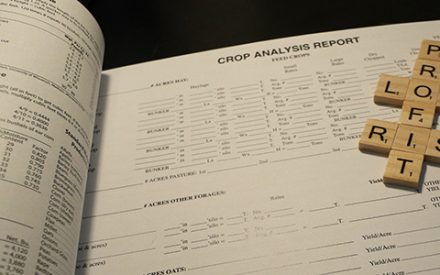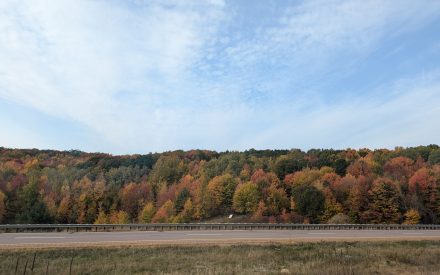Video Summary
In this Ag Weather Outlook, Josh Bendorf from the Wisconsin State Climate Office provides a detailed update on weather and climate conditions across the state as of June 12, 2025. He reviews May climate rankings, recent precipitation trends, soil moisture and temperature data, and drought conditions.
The presentation highlights regional variability in rainfall and temperature, with southern Wisconsin experiencing notable precipitation deficits and cooler-than-average temperatures. Josh also discusses crop progress, growing degree day accumulations, and provides a forecast for the upcoming weeks, including expectations for a wetter and slightly warmer pattern heading into late June.
Resources
- Wisconsin Ag Weather Outlooks
- Wisconsin State Climatology Office
- Wisconet station locations
- Wisconsin Crop Progress and Condition Report from USDA (NASS)
- Crop Conditions & Soil Moisture Analytics (NASS)
- Runoff Risk Advisory Forecast (WI-DATCP)
- NWS Milwaukee Freeze Risk Tool
Transcript
0:05
All right, Thanks for that.
0:06
Landon, could someone confirm that they can see my PowerPoint slides in presentation mode?
0:11
You’re all good, Josh.
0:13
All right, sounds great.
0:14
Well, thanks everyone for tuning in today.
0:16
Like Landon said, my name is Josh Bendorf.
0:18
I work for the Wisconsin State Climate office.
0:20
And today I will be delivering your Ag weather update that we do as part of the Badger Crop Connect series.
0:25
Just as a reminder that this is part of a larger effort, our Ag weather outlook for Wisconsin that we put out weekly and this week, this is a shortened version of that.
0:35
The longer version you can find on a website, if someone could put that into the chat.
0:40
But the latest one should be coming out, some time either later today or tomorrow.
0:47
So since the last time we talked the the month of May wrapped up and I just wanted to provide a few May climate rankings.
0:54
This is something that NOAA, their National Centers for Environmental Information, does at the end of every month, comparing how in this case, the month of May compares to prior May’s going all the way back to 1895, and how this May stacks up against those other Mays that we’ve had.
1:11
Looking across our nine climate divisions in Wisconsin, the operative word here is average.
1:17
Most of the state here was kind of right around that middle of the road.
1:20
You see a lot of numbers there in the 50s and 60s for how it ranked in terms of coldest or warmest and so right around the middle of the road.
1:28
But if you look at some of our northern climate divisions for precip, we had in particular the North Central and NE counties actually had Mays that ranked in the top 10 driest on record precip deficits of about two inches from what we normally see in those areas.
1:44
And if we look at temperature anomaly, our our northern climate divisions tended to be a little bit on the warmer side and our southern climate divisions tended to be a little bit on the cooler side, especially in the Southeast where we ended up having our 34th coldest May on record.
2:01
And I should say, you know, I say it was a very average May, but that’s, you know, we had a lot of variability in there as well.
2:07
We had high temperatures on some days that were up into the 90s at some locations and other days where we had nights that were down into the 20s and upper 30s.
2:15
So we kind of get some of everything here in Wisconsin in the month of May looking back at 7 day precip, this is a little bit dated at this point.
2:23
I put together these slides on Tuesday afternoon, but June 3rd through June 10th, most of the state saw anywhere from about an inch to two inches of precipitation.
2:33
You see a few bands, they’re showing up a kind of in that yellow color.
2:36
Those are areas that are saw two inches or more or some more of the that heavier precipitation track.
2:42
Our maximum total for last week, the station that won that was the Janesville Wastewater Treatment plant down in Rock County, which actually had almost 3 1/2 inches of precipitation.
2:54
Very welcome down in this area, which has had.
2:57
This is part of the state that’s had several inches of precip deficit since the start of 2025.
3:01
And I’ll show a map of that here shortly.
3:04
But the southwest was kind of our loser for precipitation this last week.
3:08
On the area of the state where I live, totals in the southwest range from about half an inch to 1 inch.
3:13
And I should say over the last few days, this area, this part, the southwest part of the state has had about another quarter to 1/2 inch of precipitation since Tuesday.
3:24
Looking at the 30 day precip totals and how that compares to our climatological average.
3:28
So the climatological average that we’re comparing this to is the 30 year period
3:32
1991 to 2020, we see below, below the climatological normal was kind of the name of the game across all of the state.
3:40
Those areas there that are shaded in red and the north, the northwest, North Central and southwest parts of the state, those are areas that had 70% or less of their normal precipitation totals, totals in the ballpark of about 2 1/2 inches or less.
3:56
Going back to the earlier part of May. We had near to above normal, normal precipitation in parts of the northwest and southeast where we had totals that were 4 inches or more.
4:06
You kind of see that Bullseye area between Milwaukee and Sheboygan and then some areas up there from Lacrosse to the Twin Cities.
4:15
And that Milwaukee to Sheboygan area was our area of heaviest precipitation over the last 30 days, 130 to 150% of normal 2025 precipitation total so far.
4:28
Like I mentioned before, that southern part of the state of Wisconsin has had the biggest precip deficit so far.
4:34
So that Illinois State line region, that Southern Tier of counties anywhere from like 3 to 6 inches of precipitation deficit.
4:41
That’s also where we have some D1 drought right now.
4:44
I’ll update that in a minute.
4:46
But we, but if you look at the North Central and northeast parts of Wisconsin, that’s where we’ve had some surplus precipitation, not a large surplus about an inch or so, but that’s that part of the states have been seeing a little bit of excess precipitation since the start of 2025.
5:02
Turning now to soil moisture.
5:04
So what does this precipitation mean for our soils in Wisconsin?
5:08
This is a soil moisture model.
5:09
This is a satellite based product that estimates soil moisture in the top 1m of soil and compares that to previous years and how this year ranks to other years, similar to those climate rankings that I was showing before.
5:22
So those areas that are showing up in green, there are areas that are wetter than we would normally see for early June for soil moisture according to this model.
5:30
And that area has expanded since last week.
5:33
Last week it was mostly kind of concentrated right in the center part of Wisconsin, but it has since expanded to the north and to the West from some of those precipitate that precipitation that we had last week.
5:44
So that’s kind of a shift from what has been a very dry May in that part of the state and the abnormal dryness is kind of just located down in the far southern part of the state.
5:53
Now where we had where we’ve had that that larger precip deficit since the start of the year.
6:00
So that’s a satellite based product, but we have the WiscoNet here in Wisconsin that actually measures soil moisture.
6:05
So how did that, how does our current soil moisture in the top few inches of soil compare to what we saw last week? And pretty much across the board, you can see here these are from our various research sites at UW Madison and we have soil moisture measurements at those stations via WiscoNet.
6:23
We see we have total precipitation the ballpark of anywhere from about one to two inches across these various stations.
6:29
And we see a lot of, if you look at the the ending column for those three different depths, we see a lot of those boxes shaded in green and that’s indicating a gain in our soil moisture percentage from last week thanks to that precipitation.
6:45
Looking at soil temperature, again, this is also from June 10th.
6:48
We’re running right around and our top few inches of soil right around the upper 50s to lower 60s.
6:56
And I’ll put in a plug here for Wisco Net.
6:58
If you haven’t taken a look at Wisco Net and found the station nearest to your farm or your location, I would highly encourage you to do so.
7:05
This is research quality weather and soil information that’s available very near to you.
7:10
And we’re getting close to having complete coverage here in the state of Wisconsin.
7:15
We’re up to about 64 stations across the state, with the most recent ones being added up in Ashland County and Lafayette County just a few weeks ago.
7:23
So if you click the link in the slides, which will be available in the AgWow slides once they’re available.
7:30
But if that’s in the chat, please go to the website and find the location nearest to you.
7:35
And there’s also the option to do like an Ag weather dashboard specific to your location as well.
7:41
Turning now to the drought monitor, pretty much no change from last week.
7:45
We’re still running at D1 down along that state line area along Illinois.
7:50
Abnormal dryness is pretty much unchanged in the north despite that precipitation that we had.
7:57
And if we just take a look at the time series, where, where have we been?
8:00
You know, where are we coming from?
8:01
You know, at the beginning of the growing season as we started spring up till now, you know, big declines during the months of March and April as we had some good precipitation with some small, small increases.
8:12
Since late April, early May, like I said, we’ve had precip deficit, but we’re not getting to the time of year where our evaporative demand, our atmosphere isn’t quite as thirsty as it will be about a month from now.
8:22
Our crops aren’t transpiring as much yet.
8:24
So our so a precip deficit doesn’t lead to as rapid onset of a drought as it would say mid to late summer.
8:32
So looking at our temperatures, temperature departures for the last seven days in the last 30 days below normal across a lot of the state.
8:40
It was kind of a cooler.
8:41
Both last week and last month, below normal in the South and West by about one to three degrees.
8:47
Last week, despite this area being the warmest in the state with near normal on the eastern half of the state.
8:54
And then the kind of the southern 2/3 of the state of Wisconsin has been below normal for temperatures also by about 1 to 3° going back to the middle part of May.
9:04
And what this has led to is some a little bit of a lag and growing degree accumulations going back to May 1st.
9:11
We see the southern, roughly southern 2/3 of the state of Wisconsin is showing up there as lagging in our base 50 growing degree day accumulation, which we typically look at for corn and soybean phenology.
9:23
We’re seeing lags of about 20 growing degree days or more kind of in the southern part of the state.
9:29
And then that southeast part where I mentioned had their 34th coldest May on record.
9:33
That area is lagging the most and growing degree to accumulation.
9:36
But we have a lot of growing season to go.
9:38
We can easily make up this deficit.
9:40
So just some crop progress numbers real quick.
9:44
We were running pretty good for planting for corn and soybeans, well over 90% complete, 70 to 80% complete for emergence conditions are good running well into the 70s.
9:54
Wheat is about halfway headed out, 70% good to excellent.
9:59
And then about 80 to 85% of our agricultural soils in the state have adequate topsoil and subsoil moisture.
10:06
And just a note that I’m usually I have these in map form, but as I was putting these slides together, this last touches on these today, the maps were not available quite yet.
10:16
Turning now to our forecasts and outlooks.
10:18
We have an active next seven days on tap for precipitation here in Wisconsin.
10:22
This is the latest prediction from the National Weather Services Weather Prediction Center going out to June 19th.
10:29
The best chances for precipitation are in the north and northwest parts of the state.
10:32
We have some of that abnormal dryness.
10:35
The totals forecasted right now are for one inch or more for that area, but be sure to check your local forecast for timing and totals also be more accurate than what I’ll be telling you here today.
10:45
And then precipitation chances exist pretty much through all seven days next week for at least some part of the state of Wisconsin.
10:52
So a very active next 7 days and then our 8 to 14 day temperature and precipitation outlooks.
10:59
This is as we’re getting into the latter part of June.
11:02
Temperatures are leaning slightly towards above normal.
11:05
You can see there most of the state of Wisconsin is an orange, more so in the South and West, with higher odds of being above normal in the South.
11:13
And precipitation is leaning slightly towards above normal.
11:16
These aren’t strong leans towards any means.
11:18
So I wouldn’t say these are high likelihood, but just a little bit more of a probabilistic lean towards warmer and wetter.
11:24
And then this map’s a little bit old at this point, but looking out through the remainder of summer, temperatures are showing a slight lean towards above normal with some uncertainty for precipitation, except in that very far NW sliver of the state, which is showing a slight but below normal lean.
11:42
And so with that, that’s all I have for you here today.
11:45
Here’s our contact information.
11:47
We have a great team that puts together these slides every week.
11:49
And as well as the State Climate Office, we also have agronomic recommendations both for row crops and for specialty crops that go along with these slides every week.
11:58
So I’ll be happy to take any questions, but I’ll pass the torch back to Landon.
Badger Crop Connect
Timely Crop Updates for Wisconsin
Second and fourth Thursdays 12:30 – 1:30 p.m.
Live via Zoom

 ▶ Fall 2025 Financial Assistance for Producers
▶ Fall 2025 Financial Assistance for Producers ▶ Fall 2025 Ag Policy Update
▶ Fall 2025 Ag Policy Update ▶ Fall 2025 Corn and Soybean Market Outlook
▶ Fall 2025 Corn and Soybean Market Outlook ▶ November 6 Ag Weather Outlook for Wisconsin
▶ November 6 Ag Weather Outlook for Wisconsin


